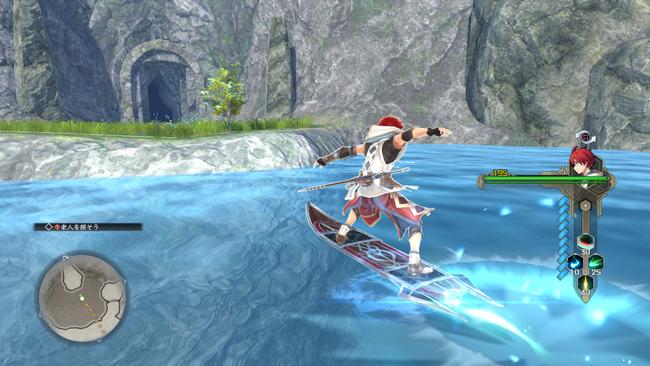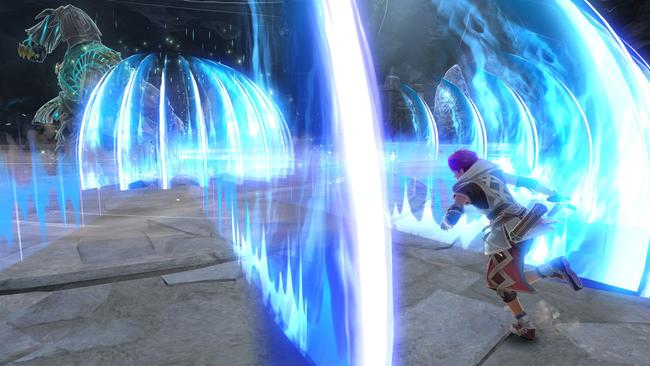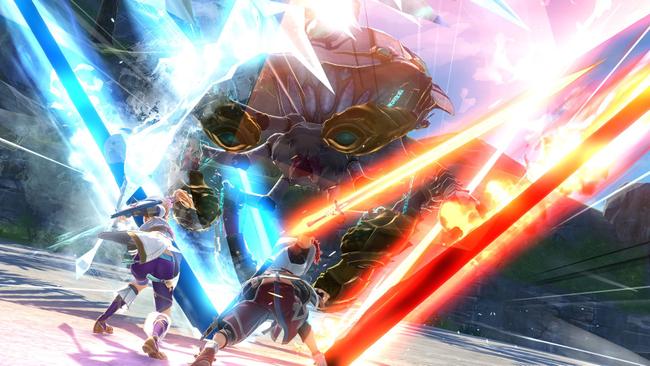
Ys X is a well-needed breath of fresh air
It's no surprise that I love me my Ys; not only did I review the Japanese release the last time a new entry came along, but I've been eagerly awaiting for my chance to get hands-on with Ys X: Nordics. Not that I expected it to be this soon, with the game's release scheduled for next week; however, Falcom did have a two-part show floor demo set aside for the upcoming release during this year's Tokyo Game Show, and I took the chance to see how the game's major changes feel in practice. Long story short; Falcom has seemingly succeeded at once again refreshing the series formula.
Backing up a second, perhaps that exclamation requires some context. For the last 4 Ys titles, Falcom has had Adol traveling and fighting with a medley cast of characters - lovingly and disparagingly referred to as the "party system". While Ys VIII overhauled things to a degree, and Ys IX even further, it's fair to say that for many players the sheen had begun to wear off and it was time for something truly new.

While Adol once again doesn't travel alone - he's joined by new heroine Karja - instead of a full cast of characters, Ys X is strictly designed around the duo, and how Falcom could designate a gameplay system designed around that concession. Enter the Mana-String; an ability that not only ties the two characters together, but also allows the use of new abilities. Grapple onto an enemy to fling the two of them closer to it, swing across branches and beams over a gap, or simply create a path where there was none. It's a versatile system that Falcom makes use of throughout the entirety of both demos that we played, alongside the new Mana-Rider - though the latter is essentially used entirely for the purposes of speedy movement when engaged on a slope leading downhill.
While many aspects of the previous Party System do remain - skills that require SP be spent to activate, switching between Adol and Karja at the press of button, and more - others are conspicuously absent. Enemies weak to specific classes of damage have been excised, and the game no longer classifies characters by what type of damage they'll dole out. While Flash Evade and Flash Guard still exist in some form, they've both been so seriously overhauled that the end product simply cannot be directly compared to what came before it.

For example; unlike in previous games, players cannot simply Flash Evade every attack. Specific enemy attacks - denoted by a blue flash around their model - denotes an attack that not only can be Flash Evaded, but rather doing so is the only correct way of mitigating it. If timed perfectly during boss battles, players can even make use of a cinematic counter to commemorate their success. Flash Guard is still applicable for most attacks, but instead of flatly improving your damage for a set period of time, players will instead build up their Revenge meter, increasing the Attack multiplier for the next skill that they use. The better the timing, the faster the multiplier will rise. Certain enemies will make use of a special Power Attack; if you can properly guard against it, much like with Flash Evade you'll be gifted a unique counter. But even if not it's a great way to improve your Revenge level.
Dual-Mode is activated by holding down the R2 key, and both Adol and Karja will begin attacking in tandem as you press the basic attack button. While combined they have access to a set of stronger, and yet more expensive Dual Skills that will deal as much damage as they might take SP from both of your character's reserves. It's a solid trade-off, and makes letting one character die in battle feel all the more restrictive.

Visually, the game obviously has seen some cutbacks versus the same company's work on The Legend of Heroes: Kuro no Kiseki, most likely owing to the game's supported platforms at launch including Nintendo Switch - but the artstyle is nice and colorful, which is a much-welcomed change after the muted color palette of Ys IX: Monstrum Nox. Unsurprisingly, both demos ran without a hitch on the PlayStation 5 units that littered the company's booth; we're eager to take a look at the Nintendo Switch version in the coming days, as that remains the major question mark about the upcoming release.
Other, smaller questions do remain; ship combat feels like a bit of an oxymoron for Ys as a franchise, but I am still curious about how it will feel in action. Side characters, the story and proper exploration are up there, too. Will players unlock even more movement abilities as the game progresses? No clue, but I'm curious about it all the same.
Which about sums up my thoughts as a whole; it's impossible to glean much if anything about the game's story from half an hour of game time, carved out from the larger experience as a whole. Yet the changes that Falcom has made to the formula are welcome, and I'm ready to see what the rest of the game has to offer. Thankfully, it won't be long until the Japanese release of Ys X: Nordics when it launches September 28, 2023 for Nintendo Switch, PlayStation 4 and PlayStation 5.